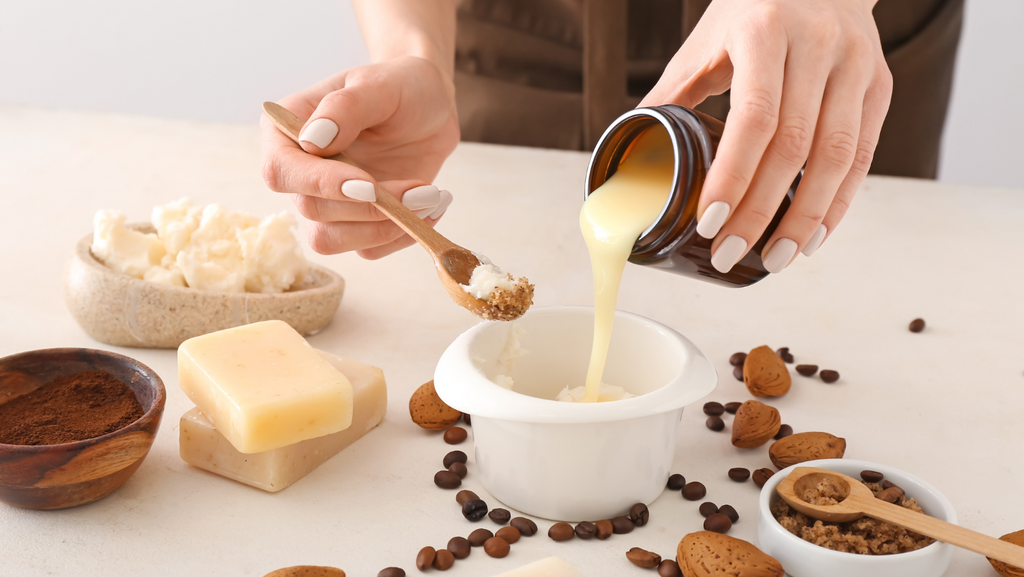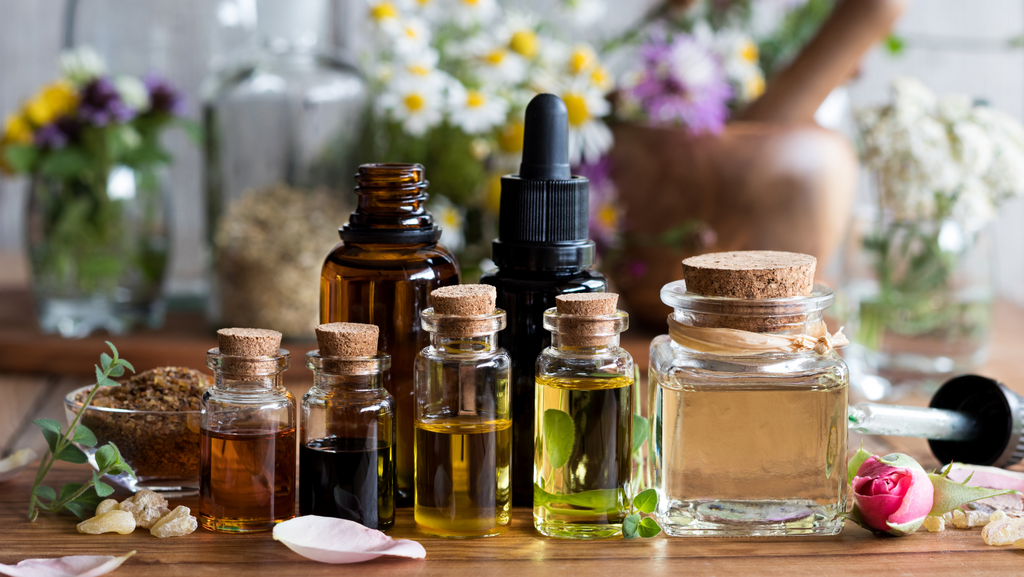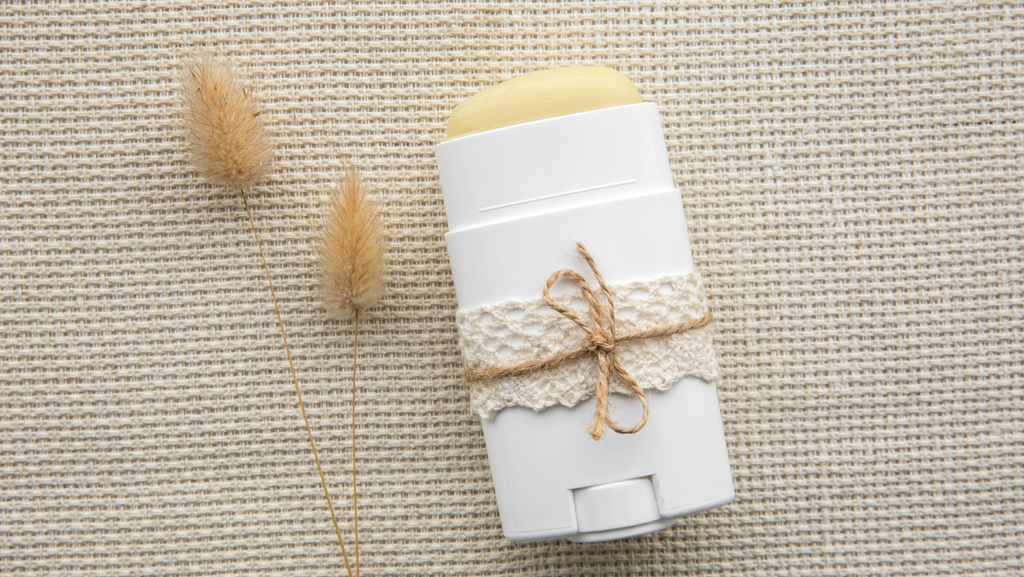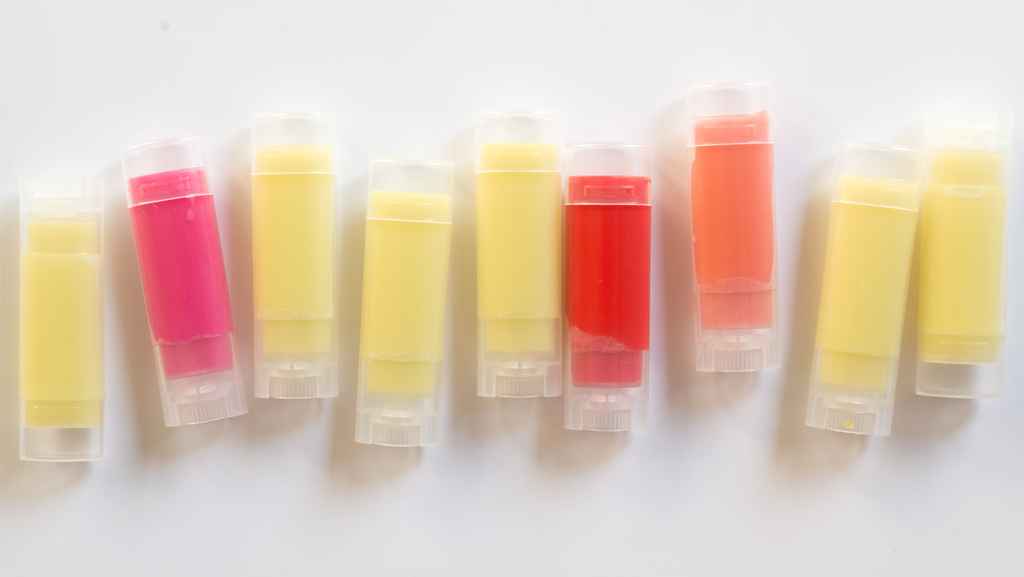The 9 Best DIY Shea Butter Products To Make At Home

What Exactly Is Shea Butter?
Shea butter is a natural fat that comes from the nuts of the shea tree, which grows in Africa. It has been used for centuries as a cosmetic ingredient for its moisturizing, anti-inflammatory, and antioxidant properties. Shea butter is also edible and has been used as a cooking oil and a medicinal remedy for various conditions
Benefits of Shea Butter for Skin and Hair
Shea butter is a natural fat extracted from the nuts of the shea tree, which grows in Africa. It has been used for centuries as a moisturizer, healer, and protector for skin and hair. Shea butter has many benefits for your beauty routine, such as:
Moisturizing Properties
Shea butter is rich in fatty acids and vitamins that nourish and hydrate your skin and hair. It can help prevent dryness, flakiness, and dullness, and restore the natural glow and elasticity of your skin and hair.
It also acts as a natural sunscreen, protecting your skin and hair from the harmful effects of UV rays.
Anti-Inflammatory and Antibacterial Effects
Shea butter has anti-inflammatory and antibacterial properties that can help soothe and heal various skin and scalp conditions, such as eczema, psoriasis, dermatitis, acne, and dandruff. It can also reduce redness, swelling, and irritation, and promote faster wound healing.
It can also help prevent infections and inflammation by creating a protective barrier on your skin and hair.
Suitability for Sensitive and Acne-Prone Skin
Shea butter is gentle and non-comedogenic, meaning it does not clog your pores or cause breakouts. It can help balance your skin’s oil production and pH level, and prevent excess sebum and bacteria from accumulating on your skin.
Shea butter can also help calm and regulate your skin’s sensitivity and reactivity, and prevent allergic reactions and irritations.
Essential Tools and Ingredients

If you want to make your own skincare products at home, you will need some basic tools and ingredients that are easy to find and use. Here are some of the essentials that you will need:
Basic Tools Required for DIY Skincare Products
- A digital scale or a measuring cup to measure the ingredients accurately and precisely.
- A double boiler or a microwave-safe bowl to melt and mix the ingredients that need heat, such as shea butter, beeswax, or coconut oil.
- A thermometer to check the temperature of the ingredients and ensure they are not too hot or too cold.
- A blender or a whisk to emulsify and blend the ingredients that need to be mixed well, such as oils, water, and emulsifiers.
- A spatula or a spoon to stir and transfer the ingredients from one container to another.
- A funnel or a pipette to pour and fill the final products into the containers or bottles
- A spray bottle or a dropper to apply the products that are in liquid form, such as toners, serums, or oils.
- A glass jar or a plastic bottle to store the final products and keep them fresh and clean. Make sure they are sterilized and have a tight lid or cap.
- A label or a marker to write the name, date, and ingredients of the products and avoid confusion.
Commonly Used Carrier Oils and Their Benefits
Carrier oils are oils that are used to dilute and carry the essential oils or other active ingredients in your skincare products.
They have different properties and benefits for your skin and hair, depending on their composition and source. Here are some of the commonly used carrier oils and their benefits:
- Jojoba oil: Jojoba oil is actually a liquid wax that mimics the natural sebum of your skin. It is lightweight, non-greasy, and easily absorbed by your skin. It can help moisturize, balance, and protect your skin from dehydration and environmental damage. It can also help regulate your skin’s oil production and prevent acne and inflammation. Jojoba oil is suitable for all skin types, especially oily, combination, and acne-prone skin.
- Sweet almond oil: Sweet almond oil is a mild and gentle oil that is rich in vitamin E, fatty acids, and antioxidants. It can help nourish, soften, and smooth your skin and hair. It can also help reduce the appearance of scars, stretch marks, and wrinkles. It can also help soothe and heal irritated, inflamed, or dry skin. Sweet almond oil is suitable for most skin types, especially dry, sensitive, and mature skin.
- Coconut oil: Coconut oil is a solid oil that melts at room temperature. It is composed of medium-chain fatty acids that have antibacterial, antifungal, and anti-inflammatory properties. It can help moisturize, cleanse, and protect your skin and hair from infections and damage. It can also help repair and strengthen your skin barrier and hair follicles. Coconut oil is suitable for most skin types, especially dry, damaged, and dull skin and hair.
- Olive oil: Olive oil is a liquid oil that is extracted from olives. It is rich in oleic acid, vitamin E, and polyphenols. It can help hydrate, nourish, and rejuvenate your skin and hair. It can also help fight free radicals, prevent oxidative stress, and delay aging signs. It can also help heal and soothe irritated, inflamed, or sunburned skin. Olive oil is suitable for most skin types, especially dry, mature, and sensitive skin.
Selection of Essential Oils for Fragrance

Essential oils are concentrated extracts from plants that have aromatic and therapeutic properties.
They can help enhance the fragrance, mood, and benefits of your skincare products. However, they can also cause irritation, allergy, or sensitivity if used undiluted or in excess.
You need to choose the right essential oils for your skin type, preference, and purpose, and use them in moderation and with caution.
Here are some of the factors that you need to consider when selecting essential oils for fragrance:
- Skin type: Different essential oils have different effects on different skin types. For example, some essential oils can be drying, stimulating, or sensitizing for some skin types, while others can be moisturizing, calming, or soothing. You need to know your skin type and choose the essential oils that are compatible and beneficial for your skin.
For example, if you have dry skin, you can choose essential oils that are hydrating and nourishing, such as lavender, rose, or chamomile. If you have oily skin, you can choose essential oils that are balancing and purifying, such as tea tree, lemon, or peppermint.
- Preference: Different essential oils have different aromas and notes that can appeal to different preferences and tastes. For example, some essential oils can be floral, fruity, or sweet, while others can be woody, spicy, or earthy.
You need to know your preference and choose the essential oils that are pleasing and satisfying for your senses.
For example, if you like floral scents, you can choose essential oils that are derived from flowers, such as jasmine, ylang-ylang, or geranium. If you like woody scents, you can choose essential oils that are derived from trees, such as cedarwood, sandalwood, or pine.
- Purpose: Different essential oils have different functions and benefits that can serve different purposes and goals. Some essential oils can be relaxing, uplifting, or energizing, while others can be soothing, healing, or cleansing.
You need to know your purpose and choose the essential oils that are appropriate and effective for your intention. For example, If you want to invigorate and refresh, you can choose essential oils that are stimulating and refreshing, such as rosemary, grapefruit, or eucalyptus.
DIY Shea Butter Product Recipes

Shea butter is a versatile and nourishing ingredient that can be used to make various skincare products at home. Here are some easy and fun DIY shea butter product recipes that you can try:
1) Shea Butter Lotion: Step-by-Step Guide
Shea butter lotion is a simple and effective way to moisturize your skin. You will need:
- 1/4 cup of shea butter
- 1/4 cup of coconut oil
- 2 tablespoons of almond oil
- 10 drops of your favorite essential oil (optional)
To make the lotion, follow these steps:
- Melt the shea butter and coconut oil in a double boiler or a microwave-safe bowl.
- Add the almond oil and the essential oil and stir well.
- Transfer the mixture to a glass jar and let it cool completely.
- Use a hand mixer or a blender to whip the lotion until it is light and fluffy.
- Store the lotion in a cool and dry place and use it as needed.
2) Whipped Shea Body Butter: Ingredients and Method
Whipped shea body butter is a luxurious and creamy product that can nourish and protect your skin. You will need:
- 1/2 cup of shea butter
- 1/4 cup of cocoa butter
- 1/4 cup of jojoba oil
- 15 drops of lavender essential oil
To make the body butter, follow these steps:
- Melt the shea butter and cocoa butter in a double boiler or a microwave-safe bowl.
- Add the jojoba oil and the lavender essential oil and stir well.
- Transfer the mixture to a glass jar and refrigerate it for an hour or until it is solid.
- Use a hand mixer or a blender to whip the body butter until it is soft and fluffy.
- Store the body butter in a cool and dry place and use it as needed.
3) Homemade Shea Butter Soap for Dry Skin

Shea butter soap is a gentle and hydrating product that can cleanse and soothe your dry skin. You will need:
- 1 pound of melt-and-pour soap base (preferably goat’s milk or glycerin)
- 1/4 cup of shea butter
- 2 tablespoons of honey
- 10 drops of rose essential oil
To make the soap, follow these steps:
- Cut the soap base into small pieces and melt it in a double boiler or a microwave-safe bowl.
- Add the shea butter, honey, and rose essential oil and stir well.
- Pour the soap mixture into a silicone mold and let it harden for a few hours or overnight.
- Pop the soap bars out of the mold and store them in a cool and dry place.
- Use the soap as needed and enjoy the soft and smooth skin.
4) Shea Butter Deodorant: A Natural Alternative

Shea butter deodorant is a natural and effective product that can keep your underarms fresh and odor-free. You will need:
- 1/4 cup of shea butter
- 1/4 cup of baking soda
- 1/4 cup of arrowroot powder or cornstarch
- 20 drops of tea tree essential oil
To make the deodorant, follow these steps:
- Melt the shea butter in a double boiler or a microwave-safe bowl.
- Add the baking soda, arrowroot powder, and tea tree essential oil and stir well.
- Transfer the deodorant mixture to a glass jar and let it cool completely.
- Store the deodorant in a cool and dry place and use it as needed.
5) Eczema Relief with Shea Butter Balm
Shea butter balm is a soothing and healing product that can help relieve the symptoms of eczema, such as itching, inflammation, and dryness. You will need:
- 1/4 cup of shea butter
- 2 tablespoons of beeswax
- 2 tablespoons of calendula oil
- 10 drops of chamomile essential oil
To make the balm, follow these steps:
- Melt the shea butter and beeswax in a double boiler or a microwave-safe bowl.
- Add the calendula oil and chamomile essential oil and stir well.
- Transfer the balm mixture to a glass jar and let it cool completely.
- Store the balm in a cool and dry place and use it as needed.
6) Exfoliating Shea Butter Scrub Bars
Shea butter scrub bars are a convenient and effective product that can exfoliate and moisturize your skin. You will need:
- 1/2 cup of shea butter
- 1/4 cup of coconut oil
- 1/4 cup of brown sugar
- 10 drops of orange essential oil
To make the scrub bars, follow these steps:
- Melt the shea butter and coconut oil in a double boiler or a microwave-safe bowl.
- Add the brown sugar and orange essential oil and stir well.
- Pour the scrub mixture into a silicone mold and refrigerate it for an hour or until it is solid.
- Pop the scrub bars out of the mold and store them in a cool and dry place.
- Use the scrub bars as needed and rinse off with warm water.
7) Cheek and Lip Stain Using Shea Butter

Shea butter stain is a natural and versatile product that can add a touch of color to your cheeks and lips. You will need:
- 1 tablespoon of shea butter
- 1 teaspoon of beetroot powder
- 1/4 teaspoon of cocoa powder
- 5 drops of peppermint essential oil
To make the stain, follow these steps:
- Melt the shea butter in a double boiler or a microwave-safe bowl.
- Add the beetroot powder, cocoa powder, and peppermint essential oil and stir well.
- Transfer the stain mixture to a small tin or jar and let it cool completely.
- Store the stain in a cool and dry place and use it as needed.
8) Sandalwood Vanilla Solid Perfume with Shea Butter
Shea butter perfume is a natural and long-lasting product that can give you a pleasant and subtle fragrance. You will need:
- 2 tablespoons of shea butter
- 1 tablespoon of beeswax
- 1 tablespoon of jojoba oil
- 10 drops of sandalwood essential oil
- 10 drops of vanilla essential oil
To make the perfume, follow these steps:
- Melt the shea butter, beeswax, and jojoba oil in a double boiler or a microwave-safe bowl.
- Add the sandalwood and vanilla essential oils and stir well.
- Transfer the perfume mixture to a small tin or jar and let it cool completely.
- Store the perfume in a cool and dry place and use it as needed.
9) Shea Butter Body Scrub: Combining Exfoliation and Moisturization
Shea butter body scrub is a simple and effective product that can remove dead skin cells and hydrate your skin. You will need:
- 1/2 cup of shea butter
- 1/2 cup of granulated sugar
- 2 tablespoons of olive oil
- 10 drops of lemon essential oil
To make the body scrub, follow these steps:
- Melt the shea butter in a double boiler or a microwave-safe bowl.
- Add the sugar, olive oil, and lemon essential oil and stir well.
- Transfer the body scrub mixture to a glass jar and let it cool completely.
- Store the body scrub in a cool and dry place and use it as needed.
Tips and Tricks for Perfect DIY Shea Butter Products
Shea butter is a wonderful ingredient for making your own skincare products at home. It has many benefits for your skin and hair, such as moisturizing, nourishing, and protecting.
To get the best results from your DIY shea butter products, you need to follow some tips and tricks. Here are some of them:
Proper Storage and Shelf Life of Shea Butter
Shea butter is a natural product that can go rancid over time if not stored properly. To extend the shelf life of your shea butter, you need to store it in a cool, dry, and dark place, away from direct sunlight, heat, and moisture.
You can also add some natural antioxidants, such as vitamin E oil or rosemary extract, to your shea butter to prevent oxidation and spoilage. Unrefined shea butter can last up to 24 months if stored correctly, while refined shea butter can last up to 12 months.
Avoiding Common Mistakes in DIY Skincare Product Creation
One of the most common mistakes in DIY skincare product creation is making a grainy or lumpy texture. This can happen when the shea butter is melted and cooled too quickly, causing the fatty acids to crystallize and form grains.
To avoid this, you need to melt the shea butter slowly and gently in a double boiler or a microwave-safe bowl, and then cool it gradually in the fridge or freezer until it is just starting to solidify. Then, you need to whip the shea butter with a hand mixer or a blender until it is smooth and fluffy.
Another common mistake is making a product that is too greasy or too hard. This can happen when the ratio of shea butter to other oils and butters is not balanced.
To avoid this, you need to choose the right oils and butters for your product, depending on the desired consistency and function. For example, if you want to make a soft and creamy product, you can use lighter oils, such as jojoba oil or almond oil, and softer butters, such as cocoa butter or mango butter.
If you want to make a hard and solid product, you can use heavier oils, such as olive oil or castor oil, and harder butters, such as beeswax or kokum butter.

Customizing Recipes for Specific Skin Types and Preferences
Shea butter is suitable for most skin types, but you can also customize your recipes to suit your specific skin type and preference.
For example, if you have dry skin, you can add more moisturizing and nourishing ingredients, such as honey, glycerin, or aloe vera. If you have oily skin, you can add more balancing and purifying ingredients, such as clay, charcoal, or witch hazel.
If you have sensitive skin, you can add more soothing and calming ingredients, such as oatmeal, chamomile, or lavender.
You can also customize your recipes to suit your preference for fragrance, color, and function. If you want to add a natural fragrance to your product, you can use essential oils, such as rose, vanilla, or peppermint.
If you want to add a natural color to your product, you can use natural pigments, such as beetroot powder, cocoa powder, or turmeric.
If you want to add a specific function to your product, such as exfoliation, cleansing, or healing, you can use natural additives, such as sugar, salt, soap, or herbs.
These are some of the tips and tricks for making perfect DIY shea butter products. Shea butter is a versatile and beneficial ingredient that can help you create your own skincare routine that will make you feel beautiful and confident.
Frequently Asked Questions
Can Shea Butter Be Used on All Skin Types?
Shea butter is generally safe and suitable for all skin types. It is rich in fatty acids and vitamins that nourish and hydrate the skin. It also has anti-inflammatory and antioxidant properties that can help soothe and protect the skin from irritation and damage.
Shea butter is not likely to cause allergic reactions, even for people who are allergic to tree nuts. However, some people may experience breakouts or clogged pores if they use too much shea butter or if they have very oily or acne-prone skin.
It is advisable to do a patch test before using shea butter on your face and to use it sparingly and moderately.
How Do I Choose the Best Shea Butter?
The best shea butter is the one that is unrefined, organic, and pure. Unrefined shea butter is the most natural and least processed form of shea butter. It has a yellowish color and a nutty scent. It retains more of its nutrients and benefits than refined shea butter, which is bleached, deodorized, and mixed with other ingredients.
Organic shea butter is the one that is produced without the use of pesticides, chemicals, or GMOs. It is more environmentally friendly and healthier than conventional shea butter.
Pure shea butter is the one that contains only shea butter and no other additives, such as preservatives, fragrances, or colors. It is more effective and gentle than shea butter products that have other ingredients.
Can I Use Shea Butter on My Face?
Yes, you can use shea butter on your face as a moisturizer, a healer, or a protector. Shea butter can help moisturize, nourish, and rejuvenate your facial skin. It can also help heal and soothe various skin conditions, such as eczema, psoriasis, dermatitis, acne, or sunburn. It can also help prevent and reduce the signs of aging, such as wrinkles, fine lines, and sagging.
Shea butter can also act as a natural sunscreen, protecting your face from the harmful effects of UV rays. However, you should use shea butter on your face with caution and moderation as it is very rich and thick, and it can make your face look oily or greasy if you use too much. It can also clog your pores and cause breakouts if you have very oily or acne-prone skin.
Use a small amount of shea butter on your face, preferably at night, and avoid applying it on areas that are prone to acne, such as the T-zone.
Make sure to choose unrefined, organic, and pure shea butter for your face, as it is more beneficial and less irritating than refined, conventional, or mixed shea butter.
Conclusion: The Best DIY Shea Butter Products To Make
Shea butter is a wonderful ingredient that can help you create your own skincare products at home. It has many benefits for your skin and hair, such as moisturizing, nourishing, and protecting.
You can use shea butter to make various products, such as lotion, body butter, soap, deodorant, balm, scrub, stain, perfume, and more. Try it and customize your products to suit your skin type, preference, and purpose. By following some of our tips and tricks, you can make perfect DIY shea butter products that will make you feel beautiful and confident.
Related Posts

The Complete Moringa Powder DIY Skincare Guide: Unlock the Power of African Superfood with Premium Natural Ingredients

Moringa Powder and Shea Butter: The Ultimate DIY Skincare Powerhouse for Radiant, Healthy Skin

Your DIY Savings Calculator: From Small Steps to Life-Changing Results
Sign Up

















